Eric Blanc replies to Mike Taber’s article Lenin, Kautsky and the Transition to Socialism and argues that the work of Karl Kautsky provides a strategy for a democratic road to socialism. Read Donald Parkinson’s response here.
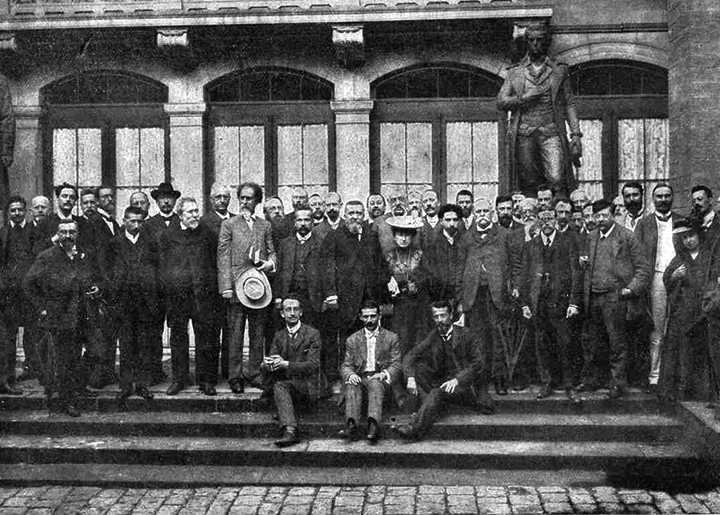
I wrote my piece on Marxist theorist Karl Kautsky’s pre-1910 strategy on the democratic road to socialism in the hopes of helping socialists today sharpen our political strategy. Moving beyond various unfounded assumptions about working-class politics and history — particularly regarding the generalizability of the October 1917 model for capitalist democracies — is a good starting point for critically thinking about the specific challenges facing us today and in the coming years.
I was excited to read Mike Taber’s response to my article, since I am a big fan of his historical work. Though his contribution distorts some of my arguments and misrepresents key historical facts, I appreciate his contribution and I hope that responding to it will help clarify the political and historical stakes of this debate. Here are my responses to what I see as the main problems with his piece.
An evolutionary road to socialism?
Taber implies that I’m trying to “prove” the case for “the perspective of evolutionary change through the capitalist political set-up.” As such, he seeks to rebut my piece by noting that because capitalists inevitably resist being overthrown, “there is no example in history where a transition to socialism was successfully achieved entirely through peaceful and electoral means.”
I don’t know what to make of this critique, since so much of my article advocated revolutionary rupture on precisely these grounds — and in demonstrating that early Kautsky positively articulated this position as well. One of the reasons why Kautsky’s radical strategy remains compelling is that it posits that to overthrow capitalism a) socialists should fight to win a socialist universal suffrage electoral majority in government/parliament and b) socialists must expect that serious anti-capitalist change will necessarily require extra-parliamentary mass action like a general strike and a revolution to defeat the inevitable sabotage and resistance of the ruling class.

Dual power and insurrection
Taber claims that “Lenin and the early Communist movement never put forward an ‘insurrectionary strategy.’” This is factually incorrect. The early Comintern was explicitly committed to insurrection as the path to institute soviet power. The Second Congress’ “Theses on the Communist Parties and Parliamentarism” insists that “the mass struggle is a whole system of developing actions sharpening in their form and logically leading to the insurrection against the capitalist state.” What differentiated Communists from Blanquists was not over whether an insurrection was needed, but whether or not it could be the product of a relatively small group of conspirators (a position Communists rejected).
Indeed, even when the term insurrection wasn’t explicitly used, the early Comintern’s commitment to fighting for soviet power necessarily meant advocating insurrection — that is, an “instance of revolting against civil authority or an established government” — since nobody believed that the existing capitalist state would peacefully cede power to workers’ councils.
Even in Lenin’s Left-Wing Communism, in which he famously advocates the tactical participation of Communists in capitalist parliaments, he makes clear that in all countries “workers must prepare—ideologically, politically and technically—for the struggle of the Soviets against parliament, for the dispersal of parliament by the Soviets.”
That a commitment to a dual power/workers’ council strategy necessarily meant orienting to insurrection was articulated and upheld by Leon Trotsky in subsequent decades. As he argued in a 1937 balance sheet of Bolshevism, the “Bolshevik party has shown the entire world how to carry out armed insurrection and the seizure of power.”
But history has shown, as I argued in my article, that “[n]ot only has there never been a victorious insurrectionary socialist movement under a capitalist democracy, but only a tiny minority of workers have ever even nominally supported the idea of an insurrection.” Neither Taber, nor other critics of my article, have sufficiently grappled with the strategic implications of this fact.
Whereas there have been dozens of occasions over the past century in which a majority of workers have supported a process of democratic socialist transformation, there’s never been anything even approximating a majoritarian working-class push towards replacing parliamentary rule with workers’ councils. Why exactly should we expect this to change in the future — let alone hinge our strategy on such a possibility? Leninists have yet to provide a compelling response to this crucial question.
Taber misses the main point that I and others have made about why we can’t overgeneralize from the Russian experience. Soviets were only able to become the legitimate democratic expression of the majority of working people in 1917 because (due to Tsarism’s autocratic legacy) they didn’t have to compete with any elected democratic parliament; the Russian Provisional Government was an unelected body with almost zero legitimacy. But in countries where democratic parliamentary bodies already existed, dual power bodies have never gained anywhere near the same amount of popular traction.
Any even-handed balance sheet of the past century must acknowledge that widespread adherence to a dual power/insurrectionary strategy has facilitated the marginalization of revolutionary socialists in democratic polities for generations. This is not primarily because of failed attempts in practice to organize insurrections, though there are some examples of these. The reason is more simple: assumptions about the generalizability of the October 1917 model have led most (though not all) revolutionary socialists for generations to downplay the importance of contesting for power in the electoral arena.
As I’ve written about extensively in my coverage of the educators’ revolt, building disruptive strikes, mass actions, powerful social movements, and militant unions is an essential and central component of any viable socialist strategy. But for socialism to become a majoritarian movement, these forms of action will very likely have to be combined with a serious and consistent intervention in electoral politics — which, whether we like it or not, is the political terrain that the largest numbers of working people engage with.
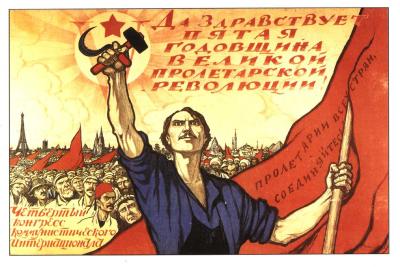
The workers’ government strategy
As I noted in my article, “the most perceptive elements of the early Communist International began briefly moving back towards Kautsky’s approach in 1922–23 by advocating the parliamentary election of ‘workers’ governments’ as a first step towards rupture.” Taber says this is untrue.
Yet the Comintern’s Fourth Congress in 1922 explicitly argued that “a workers’ government that arises from a purely parliamentary combination, that is, one that is purely parliamentary in origin, can provide the occasion for a revival of the revolutionary workers’ movement. Obviously, the birth and continued existence of a genuine workers’ government, one that pursues revolutionary policies, must result in a bitter struggle with the bourgeoisie, and possibly a civil war.”
In terms of pro-actively “advocating” such parliamentary elected workers’ governments, I was referencing the practices and agitation of national Communist parties who in 1922-23 did openly push for the election of joint Communist Party-Socialist Party governments in countries including France, Poland, and Germany.
Unfortunately, the political advance represented by the Comintern’s workers’ government discussion was short lived and it never fully strategically crystallized. Though the demand has been periodically raised by revolutionary socialists since 1923, it’s fair to say that a majority of Trotskyist and Maoist currents have stood fast to a dogmatic commitment to the dual power/insurrection strategy, as have the newer “base-building”. formations grouped in the Marxist Center.
See, for example, Sophia Burns’ case for the goal of “launching a revolutionary uprising” and Sandra Bloodworth’s recent defense of the axiom that “[t]he system of world capitalism that we confront today cannot be overturned by any means short of mass insurrection.”
I’m sympathetic to Taber’s implied argument that Marxists should remain relatively strategically open-ended when it comes to the state and revolution. A more agnostic orientation on this question would be a step forward for many socialists who have uncritically assumed the generalizability of the October 1917 model.
It’s impossible, of course, to predict the precise form through which a future socialist revolution will look like. One of the compelling aspects of Kautsky’s early writings is his stress on precisely this question. As he pointed out in 1902, “I am thoroughly convinced that it is not our task to invent recipes for the kitchens of the future. … In this field [of revolution] many surprises for us may yet appear.” Like Kautsky before1910, I agree that there’s no need to deny the possibility that insurrection could at some point be viably posed in the future.
This acknowledgement, however, doesn’t oblige us to avoid staking out a strategic stance based on a critical balance sheet of the accumulated experience of class struggle over the past hundred and fifty years. Politics is about wagers, not certainties. If unexpected conditions and developments emerge, we can and should always adjust our approaches accordingly.
In my view, building a militant working-class mass movement and fighting to elect workers’ governments remains the most likely path to begin a process of structural transformation and mass action capable of culminating in the overthrow of capitalism. In other words, there’s sufficient historical and contemporary evidence for Marxists to make a strategic wager on a democratic road to socialism.
Kautsky’s democratic road to socialism
But what exactly was Kautsky’s “democratic road to socialism” strategy? Taber asserts that Kautsky only first articulated this conception in 1918, i.e. after his reformist turn. This is not accurate.
As Kautsky’s biographer Salvadori notes, Kautsky from at least 1892 onwards “posed an indissoluble link between the conquest of the state and the conquest of a majority in parliament.” Indeed, I included a 1909 Kautsky quote in my article in which he argues that once workers won a majority in parliament, this would lead to a revolutionary, extra-parliamentary clash because the bourgeoisie would refuse to accept the socialists’ anti-capitalist policies.
This was the hegemonic conception of revolutionary rupture among Second International Marxists. As Kautsky put it in 1905, “the bourgeoisie has long ceased to see parliament as the chosen instrument of its rule – as an instrument that is safe under all circumstances. It feels that … the hour is approaching where the proletariat … in Germany it will conquer parliament with the aid of universal suffrage. The bourgeoisie feels that it is lost if parliamentarism becomes a truth.”
Darren Rosso’s recent article charting and condemning Kautsky’s parliamentarism provides more than enough further textual evidence demonstrating that, notwithstanding his repeated caveats about not being to predict the precise form of a social revolution, Kautsky from the 1890s onwards generally portrayed anti-capitalist rupture as passing through a victorious election of a workers’ party in parliamentary, universal suffrage elections.
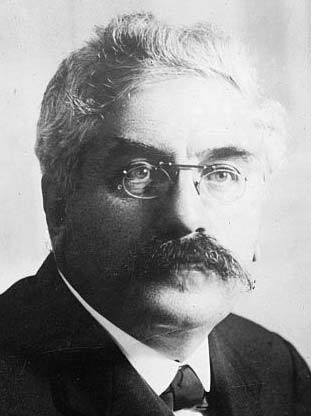
Against ‘Ministerialism’
Taber claims that Kautsky’s “unsavory” stances after 1910 were rooted in his supposed “longstanding tendency of adapting to reformist and opportunist currents.” Yet Taber’s evidence of the “best example” of this supposed tendency in fact proves the exact opposite.
In 1899-1900, Kautsky led the fight to denounce the entry of reformist socialist Alexandre Millerand into the French government. Rather than praise Kautsky’s sharp fight against reformism in practice, Taber ungenerously criticizes the fact that Kautsky’s written resolution condemning Millerand and socialist “ministerialism” left open the possibility of socialists joining a capitalist government in exceptional circumstances. Yet, far from being a particularity of Kautsky, this exact same position was also shared at the time by fellow revolutionaries Rosa Luxemburg and Giorgi Plekhanov.
Moreover, Taber fails to acknowledge that it was Kautsky himself who only three years later took the lead in articulating and advocating what soon became the standard “orthodox” Marxist stance on this question: non-participation in capitalist governments as a matter of principle. In 1903, the German SPD Dresden congress adopted the resolution written by Kautsky making a case against any such participation under any circumstances. The 1904 Amsterdam Congress of the Second International reaffirmed the Kautsky/SPD 1903 resolution.
As I’ve written about elsewhere, Kautsky from 1903 onwards was the most prominent opponent in Germany and internationally of “ministeralism,” or what would later become known as Popular Frontism. Only many years later, during the German Revolution of 1918-23, did Kautsky reverse his stance on this crucial question. In short, even Taber’s cited “best example” shows that Kautsky led the international fight against reformism before 1910 — as Lenin rightly argued, Kautsky’s later move to the center was a break from, not a continuation of, his earlier strategy and approach.
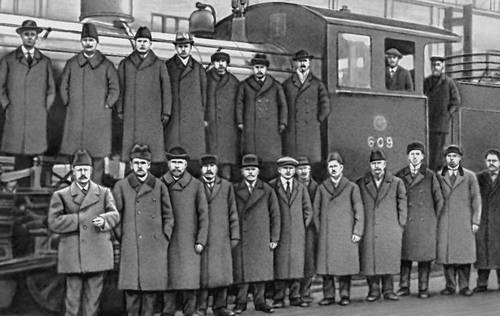
The lessons of Finland
I noted that Kautsky’s early radical strategy guided Finnish Marxists to successfully overthrow capitalist rule in 1917-18 — arguably the world’s only successful workers’ revolution in parliamentary conditions. Yet Taber argues that the Finnish Revolution is an example of why “sowing illusions among working people in a purely ‘electoral road to socialism’ is a recipe for disaster and defeat.”
It’s worth pointing out that neither I, the early Kautsky, nor the Finnish Marxists ever advocated a “purely electoral” strategy. As I stressed in my piece, and as the experience of Finland bore out, “avoiding the dead-end of social democratization will above all require a very intense and sustained degree of mass action and independent working-class organization outside of parliament. Without this, even the most well-intentioned government will flounder.”
But the main substantive point I want to address here concerns what lessons we can draw from the crushing of the Finnish workers’ government in 1918. Taber implies that this outcome somehow invalidates Kautsky’s Marxist strategy. In my view, it’d be a mistake to throw out the strategic lessons learned from a successful workers’ revolution on the grounds of its later military defeat.
By this criteria, we should also dismiss the 1871 Paris Commune as well as Bolshevism, since its 1917-18 governments in Latvia, Estonia, and Baku were similarly taken down by the combined military forces of domestic and international counter-revolution. Furthermore, the Bolshevik project was also fundamentally defeated in Russia’s civil war, though this took the unexpected form of the rise of a Stalinist bureaucracy. Anything resembling workers’ democracy in Russia lasted less than half a year after the October Revolution, not much longer than the Finns.
Adhering to revolutionary politics, unfortunately, does not somehow automatically guarantee victory for one’s political project. Taber’s case would only be valid if the Finnish socialists’ commitment to Kautsky’s strategy was the primary reason for the defeat of their workers’ government. But, in reality, the Finnish socialists were militarily defeated because they were isolated and outgunned by the combined weight of the German and Finnish ruling classes – and because the Bolsheviks were too weak to offer them serious armed support.
Democratizing the regime
Since space restrictions prevented a thorough discussion in my Jacobin piece, I’m glad to get the opportunity to expand on my argument that “reclaiming Kautsky’s strategy should prompt socialists to focus more on fighting to democratize the political regime.” My point here was not to deny that Leninists have often fought for democratic rights like political equality for all or self-determination for oppressed peoples.
Rather, I sought to show that Kautsky’s strategic emphasis on fighting for the radical republican transformation of the existing state has been unfortunately marginalized on the far left since the October Revolution. As such, I linked to Chris Maisano’s excellent article on the anti-democratic U.S. political regime, which raised the need for socialists to fight for structural reforms like proportional representation, abolishing the Electoral College and the Senate, democratizing the Supreme Court, lowering the power of the executive branch, and enacting deep labor law reform. In this sense, it’s fair to say, as I wrote, that “Leninists have often been reluctant to proactively fight for major democratic reforms [to the structures of the political regime] because they seek to completely illegitimate the current state.”
Taber acknowledges that “one can unquestionably find some self-styled Leninist groups and parties that undervalue this fight [for democracy].” But I am not convinced of his assertion that “one cannot find such undervaluing in Lenin, Trotsky, [and] the early Comintern.” Even if we leave aside my main intended point regarding the forgotten socialist legacy of fighting for democratic republicanism, the fact remains that many of the post-1917 writings of these figures and the Comintern did diminish the importance of democracy. As Rosa Luxemburg famously argued, Bolshevik leaders as early as 1918 had a tendency to make a virtue of necessity in their suppression of basic political freedoms and democratic structures within Russia.
And on an international level, Lenin and the Comintern’s often one-sided denunciations of bourgeois democracy as a complete sham lent itself to ultra-leftism even in the early days of the Communist International. As John Riddell’s work on this website has demonstrated, for example, Communist leaders before 1923 often failed to distinguish sufficiently between capitalist democracies and authoritarian regimes, including fascism.
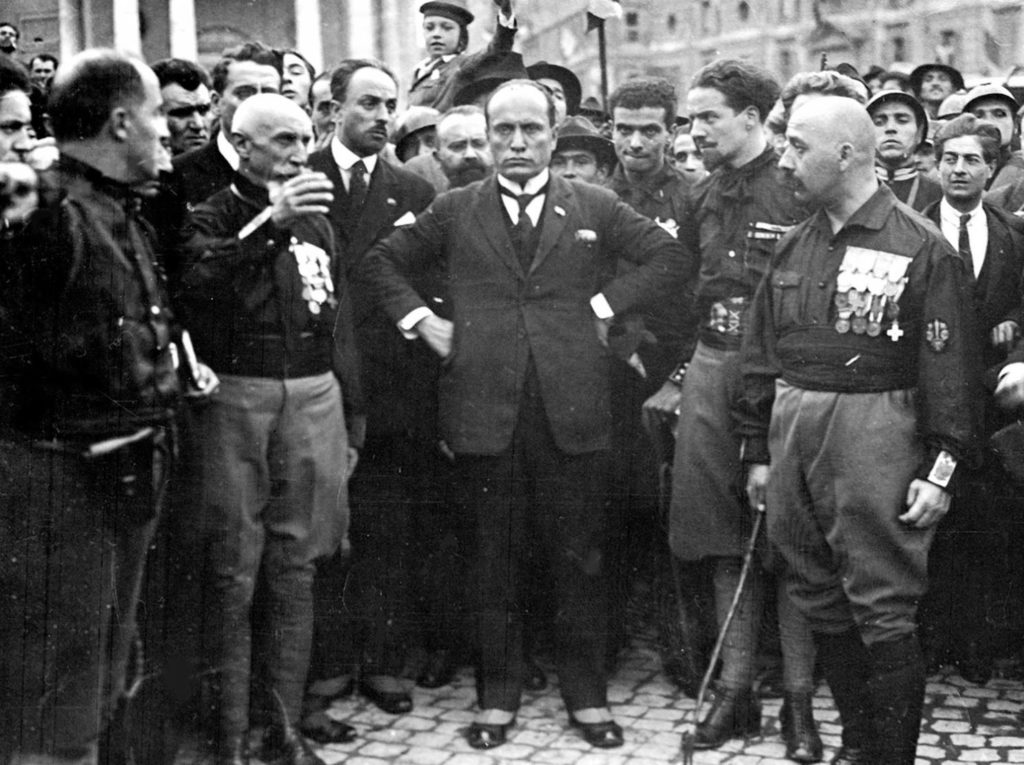
Conclusion
I hope that this debate, as it develops, will not remain limited to discussing the details of Second International Marxism — the case for and against distinct socialist strategies for contemporary conditions certainly doesn’t hinge on what activists wrote or did over a century ago.
As other comrades consider weighing in, I would again underscore that nobody, to my knowledge, has yet made a compelling positive case for the relevance of a dual power/insurrectionary strategy for advanced capitalist democracies. An article along these lines would do much more to clarify this debate than another volley of quotes from Lenin or Gramsci. Criticizing social democracy and democratic socialism is not politically convincing unless you can provide a viable alternative.

2 Replies to “The Democratic Road to Socialism: Reply to Mike Taber”
Comments are closed.